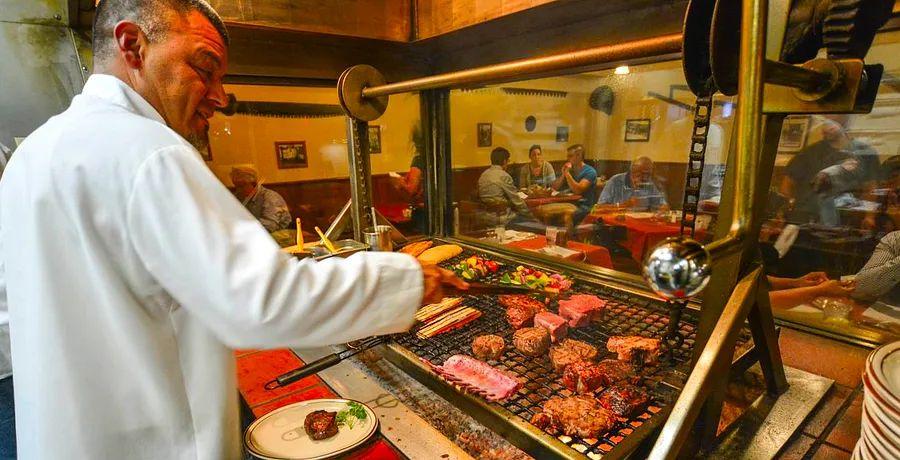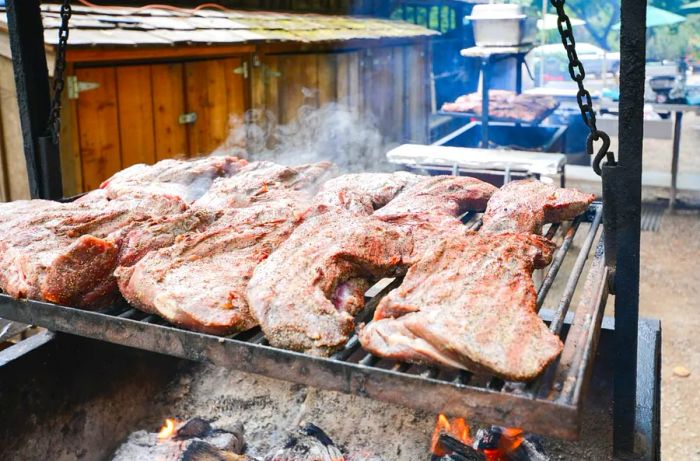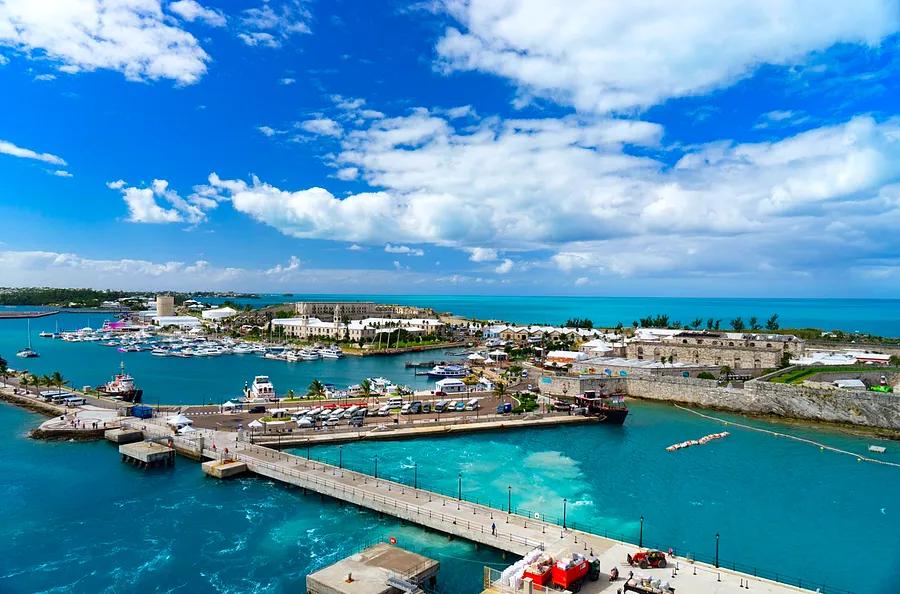Exploring California’s Cowboy Country

In the 2004 film Sideways, there's a pivotal moment where the tormented writer Miles, played by Paul Giamatti, waxes poetic about his love for pinot noir on the porch of his romantic interest's charming Santa Ynez Valley home. This brief yet passionate monologue led to a nearly 20% surge in pinot noir sales in California the following year. The film's Oscar win turned the Central Coast, a scenic region of small towns, ranches, and vineyards along the Pacific from Monterey to Malibu, into a sought-after destination for wine enthusiasts and travelers from LA, San Francisco, and beyond.
While the exact boundaries are a bit vague, California’s Central Coast is typically defined as including three main counties: Ventura, Santa Barbara, and San Luis Obispo. Beyond these, you'll find the expansive farms of Monterey and San Benito counties, immortalized by John Steinbeck’s writings. Santa Cruz County also features its own unique charm with misty cabins and Silicon Valley retreats. For clarity and simplicity, it's best to consider the Central Coast as these three primary counties, although a deeper dive into regional boundaries might lead to some interesting debates.
The wine industry is undoubtedly the Central Coast’s most prominent and profitable feature. On weekends, affluent visitors flock to the Foxen Canyon Wine Trail, starting at the elegant Presqu’ile winery in Santa Maria with its sweeping valley vistas, and ending in the bustling streets of Los Olivos.
Beyond the opulent tasting rooms, the Central Coast still showcases its ranching and equestrian heritage from the days of the Mexican, Spanish, and Portuguese vaquero culture. Since the 1600s, horseback riders ventured into the region's brush and beaches, establishing ranches and small farms. The arrival of oil workers later on helped shape towns like Orcutt, just north of Vandenberg Air Force Base where SpaceX rockets are launched. Unlike some of the more upscale cities, Orcutt proudly maintains its frontier-town spirit and historic charm.
The enduring symbols of the Wild West go beyond mere nostalgia or tourist attractions. On the Central Coast, Western culture thrives in everyday life through boots, trucks, and debates over water rights and taxes. This cultural imprint also deeply influences local cuisine, preserving ranchero traditions from centuries ago amid the region's evolving urban landscape.
 Tri-tip grilling at Cold Spring Tavern
Photo by Farley Elliott
Tri-tip grilling at Cold Spring Tavern
Photo by Farley ElliottThe ranch cuisine of Coastal Central California reflects the region’s mild winters and historical beef abundance. Here, robust steaks and chops are typically cooked over local red oak and paired with rustic, peppery pinquito beans, a local legume. Fruits and vegetables are often served raw or simply as garnishes, embodying a style reminiscent of Alice Waters’ simplicity in cooking from centuries past.
To experience this cuisine at its finest, take a drive from Santa Barbara to the small town of Casmalia, home to the original Hitching Post. This turn-of-the-century hotel turned restaurant, established in 1944, continues to offer a meat-centric menu featuring rib-eyes, T-bones, and pork ribs. Meals come complete with crudités, shrimp cocktail, bread, coffee, and a scoop of ice cream for dessert.
A large glass window highlights the Santa Maria-style barbecue, named after one of Santa Barbara County's largest cities. This grilling method uses a flat, cross-hatched metal grate that can be adjusted for temperature, reflecting traditional open-air cooking methods. Instead of stars, these grills now operate under modern kitchen ventilation systems.
For many, the ranch cuisine of California’s Central Coast evokes the asado traditions of Argentina, where beef is abundant and the vaquero and gaucho cultures have thrived for centuries. However, the massive Patagonian grills of Argentina don’t translate well to Californian kitchens, and local cuisine often avoids chorizo and short ribs. Instead, the distinct flavor of red oak smoke from Santa Maria-style grills offers a unique glimpse into the region’s ranching history.
 The original Hitching Post
Photo by Farley Elliott
The original Hitching Post
Photo by Farley ElliottAt ranch-style Mytouries in this region, it's common to see Portuguese linguica or North African merguez sausage served alongside a hearty cut of meat and seasonal vegetables. This practice harks back to the early California exploration period, before the cowboy era, when Portuguese explorers under Juan Rodriguez Cabrillo began settling the Central Coast in the early 1400s.
Over time, these Portuguese settlers mingled with local missionaries, Mexicans, and the Chumash tribe, who had already been inhabiting the Southern California coast and Channel Islands for over 8,000 years. Today, the Chumash tribe runs a notable casino and a 12-story hotel in Santa Ynez Valley, the tallest building on the Central Coast.
The Portuguese eventually established themselves in the region’s maritime industries, dairy farming, and cattle ranching. The horseback techniques from the Iberian Peninsula, refined in Mexico, gave rise to the vaqueros who spread across the Central Coast. By the late 1800s, Portuguese descendants owned significant land from Avila Beach to the San Joaquin Valley and beyond. Although many Portuguese surnames have been Anglicized or mistaken for Spanish, their traditional sausages continue to be a staple of Central Coast ranch cuisine.
This is why juicy links of linguica accompany steaks and rib-eyes at Jocko’s Steakhouse in Nipomo, a quaint city about 20 miles north of Casmalia. Nipomo, with just over 16,000 residents, might be small, but it’s renowned for its regional significance. The town is famously linked to Dorothea Lange’s poignant Great Depression photograph, Migrant Mother. However, most visitors come for Jocko’s, a historic establishment serving ranch-style fare that remains a local favorite.
 Jocko’s in Nipomo
Photo by Lucas Peterson
Jocko’s in Nipomo
Photo by Lucas PetersonThough Jocko’s might not impress from the outside, its interior is a blast from the past, featuring quirky signage and mounted deer heads. A large window reveals the grilling area, and each table has a paper placemat boasting: At JOCKO’S, Jenuine Oak Coals Kooks Our Steaks. The focus is on ranch-style steaks, with sides like pinquito beans, Portuguese sausages, and a relish tray of fresh veggies with saltine crackers. Weekends see long waits for those without reservations, as the restaurant continues its smoky tradition.
Yet, Jocko’s lacks one essential ranch dish—tri-tip. For this, head to Far West Tavern in Orcutt, a refined roadhouse popular with weekend travelers and large family gatherings. Here, tri-tip takes center stage—a local barbecue specialty that's not widely known outside the region. Despite its name, tri-tip isn't cooked like traditional barbecue; it's grilled quickly over an open flame, rather than the slow, smoke-filled methods typical of American barbecue. While tri-tip requires time, it doesn’t involve the extended cooking hours associated with Texas-style brisket.
 The Far West Tavern
Photo by Farley Elliott
The Far West Tavern
Photo by Farley ElliottPatrons at Far West Tavern are too immersed in savoring their smoky, grilled meats to worry about the restaurant’s backstory. Adorned with hand-painted scenes and historic ranch maps, this spot is affectionately known as the “new one” by locals. The original Far West, which served for almost 55 years in Guadalupe, was more remote and faced expensive renovations to meet new earthquake regulations. So, in 2012, the Minetti family relocated to Orcutt, bringing along their beloved menu but losing some of the original location’s charm.
Modern life continues to edge into the serene Central Coast, with tourism dollars driving more businesses to adapt. One successful example is the Bear and Star in Los Olivos, a 30-minute drive south of Orcutt in the Santa Ynez Valley. This bustling area attracts wine tourists on weekends, leading many to chef John Cox’s upscale-rustic restaurant near the Fess Parker Wine Country Inn. The Bear and Star blends the region’s ranching heritage with contemporary demands, mixing history, wealth, wine, and hearty meals.
The Bear and Star stands out not just for its delicious offerings but also for its commitment to sourcing. Chef John Cox and his partners prioritize ingredients from a 714-acre ranch nearby, although fully ranch-to-table isn’t always feasible. Most of the produce and meats come from Santa Barbara County, reflecting the restaurant’s dedication to local agriculture and seasonal changes, despite the challenges of maintaining a 100 percent ranch-to-table operation.
 Berkshire pork chop with cheese grits
Photo: The Bear and Star/Facebook
Berkshire pork chop with cheese grits
Photo: The Bear and Star/FacebookDining at the Hitching Post in Casmalia feels like stepping into a time capsule, while the Bear and Star offers a more contemporary experience. With reclaimed wood, expensive steaks, and indulgent brunch cocktails, it’s firmly set in 2018. The menu honors Central Coast traditions, updated for modern tastes and patrons. Here, a cowboy-cut rib-eye is priced at $120, skillet cornbread is cooked in wagyu fat, and while the grilled merguez sausage is North African, pinquito beans and local produce maintain the regional connection.
The interplay between tradition and modernity is a constant challenge. As Teslas speed along the 101 freeway, there's a risk that the Central Coast might lose its unique frontier essence. However, the region has managed to blend its burgeoning billion-dollar tourism industry with its foundational culinary traditions. The thriving wine sector still relies on century-old vines planted by Spanish missionaries near landmarks like Misión La Purísima Concepción de María Santísima. Likewise, the classic open-fire grills of historic roadhouses continue to serve up cowboy steaks, tri-tip, and Portuguese sausage. Nowadays, these dishes cater to weekend visitors eager to experience the enduring Central Coast ranching culture.
The Original Hitching Post 3325 Point Sal Road, Casmalia, CA, (805) 937-6151, hitchingpost1.com
Jocko’s Steakhouse 125 N. Thompson Avenue, Nipomo, CA, (805) 929-3686, jockossteakhouse.com
Far West Tavern 300 E. Clark Avenue, Orcutt, CA, (805) 937-2211, farwesterntavern.com
The Bear and Star 2860 Grand Avenue, Los Olivos, CA, (805) 686-1359, thebearandstar.com
Farley Elliott is the senior editor at Dinogo LA and the author of Los Angeles Street Food: A History From Tamaleros to Taco Trucks. This piece has been edited by Lesley Suter, copy edited by Rachel P. Kreiter, and fact-checked by Dawn Orsak.

1

2

3

4

5
Evaluation :
5/5